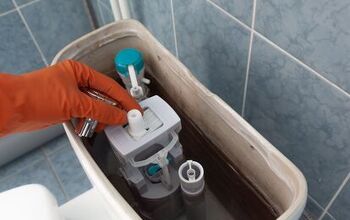Winter Composting Tips And Tricks

A big part of the joy of composting is that you get to see your progress week after week. Unfortunately, this becomes much less rewarding during the winter, when organic matter decomposes more slowly. However, you can avoid many common winter composting pitfalls if you keep a few simple tips in mind.
During the winter, you must insulate the top layer of your compost pile or bin with materials like straw or fallen leaves. This can help the pile retain heat, which can also be achieved by covering the compost pile with a breathable tarp. Add some nitrogen-rich materials, such as eggshells, coffee grounds, and plant trimmings, to your compost pile continues to decompose during the winter.
Each of these tips can help keep the activity of the microorganisms in your compost pile from slowing down too much this winter. They may still slow down, but decomposition will continue if you adequately prepare your compost pile. Follow along as we highlight five essential winter composting tips and tricks.
Can You Keep Composting During The Winter?
You can keep composting during the winter, but the process will slow down as the temperatures drop. Naturally, cold temperatures affect all of the living organisms in your compost heap or bin. This includes bacteria, fungi, and many microscopic organisms, which help break down the organic matter in your compost heap.
Luckily, cold weather doesn’t typically kill the bacteria and fungi in a compost heap, but it does slow them down. They will remain active, but you can’t expect the compost to make as much progress as it would during the summer. However, the slow decomposition rate will eventually plateau, then speed up when the spring arrives.
How To Protect Compost During The Winter
Winter may not be the ideal time to start composting, but you can easily keep it going throughout the season. That said, you must take a step back and realize that standard compost maintenance doesn’t always apply during the winter. Luckily, you can avoid most problems if you follow a few key winter composting tips and tricks, such as:
1. Use A Breathable Cover
Some people prefer compost heaps over compost bins, and both are great options. However, a compost heap is more vulnerable to winter weather than the average compost bin. That’s because some people don’t cover their compost heaps, which leaves them vulnerable to the elements.
An uncovered compost heap can backfire in rainy, humid climates, but it’s worse during the winter in cold areas. You can keep composting during the winter if you place a breathable cover on the compost heap to help the pile retain heat. That way, the microorganisms won’t slow down quite as much, so the heap may make more progress.
“Breathable” is the operative word, as you want to ensure the compost pile gets enough airflow. A simple breathable tarp may even be enough to protect your compost pile this winter.
2. Switch To A Bin
If you are concerned a breathable tarp won’t be enough to protect your compost heap throughout the winter, it’s a great idea to move your compost heap into a compost bin for extra protection. Compost bins are less messy and can help the organic matter retain heat better than when it’s in a pile.
Another benefit of a compost bin is that you won’t have to worry as much about rodents and other pests.
Commercial compost bins typically cost as little as $30, but big units cost over $400. Some people build compost bins using scrap metal and wood.
Keep in mind that moving your compost pile into a bin can be messy, especially if you don’t plan ahead. Separate the top layers into different piles away from the bin, then fill the bin, starting with the bottom of the compost heap. Working backwards like this is quite effective if you methodically layer the compost. Otherwise, it’s not essential.
3. Insulate The Compost
Whether you have a compost pile or a bin, insulating the compost is essential during the winter. This can help prevent the compost pile from seemingly going dormant for a few months, but it will still slow down. The key is to use dense organic matter, such as straw, hay, lawn thatch, and thick leaves, to insulate the compost.
You can also put a dense layer of old mulch and wood chips on the compost pile to insulate it. It helps to save fallen leaves and other yard debris throughout the autumn months to use on your compost pile. That way, you can make the most of the organic matter your yard has to offer.
Leaves can enrich your compost with essential nutrients like potassium and nitrogen. However, be sure not to pack the insulating layer too tightly on top of your compost pile. Doing so can restrict the airflow and do more harm than good.
4. Keep Turning It
Just because the microorganisms in your compost pile slow down doesn’t mean you should stop stirring it. Regularly turning a compost pile can help ensure enough oxygen flow. Without oxygen, the decomposition rate can slow down too much, negatively impacting its progress.
Good airflow can also help maintain a balance of bacteria and keep bad pathogens at bay. You only need to turn a compost pile once every 1 to 2 weeks during the winter, for the most part. Otherwise, you can accidentally lower the compost pile’s internal temperature and hinder decomposition.
Work quickly to ensure that too much cold air doesn’t work its way into the compost pile. If possible, wait to turn the compost pile until the warmest point of the day. If not, it’s not the end of the world, as long as you turn the pile quickly.
5. Feed The Pile Nitrogen
It’s important to keep “feeding” your compost pile throughout the winter. However, this will only pay off if you feed it the right ingredients, which typically include green materials. In the composting world, green materials include coffee grounds, banana peels, plant trimmings, eggshells, and other kitchen scraps.
Each of these materials releases a good amount of nitrogen, which serves as fuel in composting piles. A healthy nitrogen level can ensure bacteria and fungi in your compost pile can thrive and reproduce. Low nitrogen levels can slow the microorganisms, and they may eventually stagnate.
However, too much nitrogen can make your compost pile smell bad and become slimy. Excessive nitrogen can reduce the oxygen level, and the compost pile may produce methane gas.
Can Compost Survive Snow?
Compost can survive snow in many cases, but a heavy, drawn-out snowstorm can cause problems. A few inches of snow won’t likely hurt your compost pile, especially if it’s insulated. A light layer of snow can even insulate your compost pile, especially when the sun comes out.
However, your compost pile may suffer some damage if it keeps snowing for hours or days. The weight of the snow can compact the compost and restrict the airflow, depriving it of oxygen. In that case, it’s worth removing as much snow as possible and turning the pile to help it breathe.
The other negative outcome is that your compost pile can get too wet and stay wet if a ton of snow melts. In that case, it helps to add some cardboard and shredded leaves to help absorb moisture and eventually dry the pile. Otherwise, you can put a dark, breathable tarp on the compost pile and let it sit in the sun. The heat should help the remaining snow melt and help dry out the pile.
Summing It Up
Turn your compost pile once every week or two to help promote healthy airflow during the winter. You must also insulate the compost pile with fallen leaves or hay to protect the microorganisms from getting too cold. It’s worth upgrading from a compost heap to a bin during the winter, as bins are less vulnerable to moisture and freezing temperatures.
Related Guides:

Nick Durante is a professional writer with a primary focus on home improvement. When he is not writing about home improvement or taking on projects around the house, he likes to read and create art. He is always looking towards the newest trends in home improvement.
More by Nick Durante












![10 Best Cordless Leaf Blowers – [2022 Reviews & Ultimate Guide]](https://cdn-fastly.upgradedhome.com/media/2023/07/31/9070789/10-best-cordless-leaf-blowers-2022-reviews-ultimate-guide.jpg?size=350x220)














